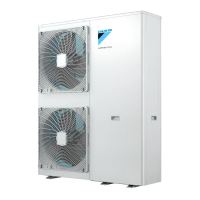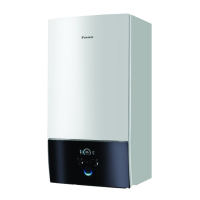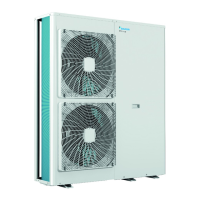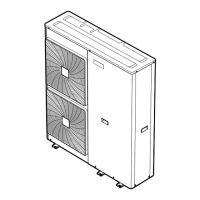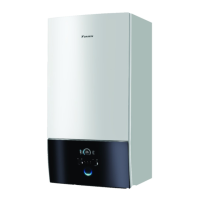ESIE09-08A
Troubleshooting 127
Part 7 - Troubleshooting
1. Symptom-based Troubleshooting ...................................................................129
2. Troubleshooting by Remote Control...............................................................131
2.1 The INSPECTION / TEST Button ...................................................................131
2.2 Self-diagnosis by Wired Remote Control.........................................................132
2.3 Operation of the Remote Controller’s Inspection / Test Operation Button......133
2.4 Remote Control Service Mode .........................................................................134
2.5 Remote Controller Self-Diagnosis Function ....................................................136
3. Troubleshooting by Indication on the Remote Controller ..............................142
3.1 “A1” Indoor Unit: PC Board Defect.................................................................142
3.2 “A6” Indoor Unit: Pump Error (M1P) or Other Water System Error ..............143
3.3 “A9” Indoor Unit: Malfunction of Moving Part of Electronic Expansion Valve
(K1E) R-410A circuit144
3.4 “AE” Indoor Unit: Water Circuit Error ............................................................146
3.5 “AJ” Indoor Unit: Malfunction of Capacity Determination Device.................147
3.6 “C1” Indoor Unit: Failure of Transmission (Between Indoor unit PC Board and
Control PC Board)148
3.7 “C4” Indoor Unit: Malfunction of Thermistor (R3T) Liquid Thermistor R-410A
150
3.8 “C5” Indoor Unit: Malfunction of Tank Thermistor (R2T) .............................151
3.9 “C9” Indoor Unit: Return Water Thermistor (R4T).........................................152
3.10 “CA” Indoor Unit: Leaving Water Thermistor Error (R5T) ............................153
3.11 “CJ” Indoor Unit: Malfunction of Thermostat Sensor in Remote Controller ..154
3.12 “E1” Outdoor Unit: PC Board Defect ..............................................................155
3.13 “E1” Indoor Unit: PC Board Defect.................................................................156
3.14 “E3” Outdoor Unit: Actuation of High Pressure Switch..................................157
3.15 “E3” Indoor Unit: Actuation of High Pressure Switch.....................................159
3.16 “E4” Outdoor Unit: Actuation of Low Pressure Sensor...................................162
3.17 “E4” Indoor Unit: Actuation of Low Pressure Sensor......................................164
3.18 “E5” Outdoor Unit: Inverter Compressor Motor Lock.....................................166
3.19 “E5” Indoor Unit: Inverter Compressor Motor Lock .......................................167
3.20 “E7” Malfunction of Outdoor Unit Fan Motor.................................................168
3.21 “E9” Outdoor Unit: Malfunction of Moving Part of Electronic Expansion Valve
170
3.22 “E9” Indoor Unit: Malfunction of Moving Part of Electronic Expansion Valve
(K2E) R-134a circuit172
3.23 “F3” Outdoor Unit: Abnormal Discharge Pipe Temperature...........................174
3.24 “F3” Indoor Unit: Abnormal Discharge Pipe Temperature..............................175
3.25 “H9” Outdoor Unit: Malfunction of Thermistor (R1T) for Outdoor Air .........176
3.26 “J3” Outdoor Unit: Malfunction of Discharge Pipe Thermistor (R2T)............177
3.27 “J3” Indoor Unit: Malfunction of Discharge Pipe Thermistor (R6T) ..............178
3.28 “J5” Outdoor Unit: Malfunction of Thermistor (R3T, R5T) for Suction Pipe 1, 2
179
3.29 “J5” Indoor Unit: Malfunction of Thermistor (R7T) for Liquid R-134a..........180
3.30 “J6” Outdoor Unit: Malfunction of Thermistor (R6T) for Outdoor Unit Heat Ex-
changer181
3.31 “J7” Outdoor Unit: Malfunction of Thermistor (R7T) for Outdoor Unit Liquid
Pipe182

